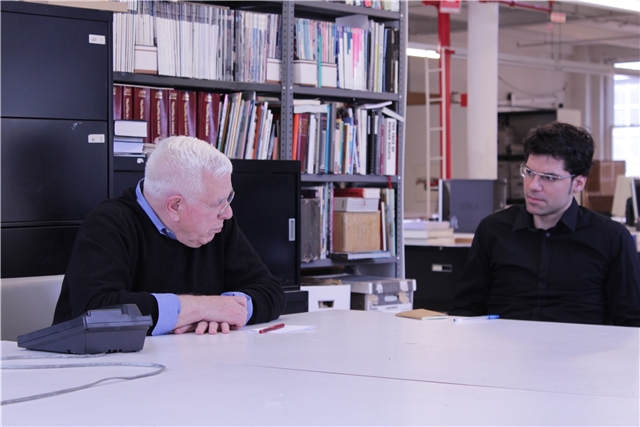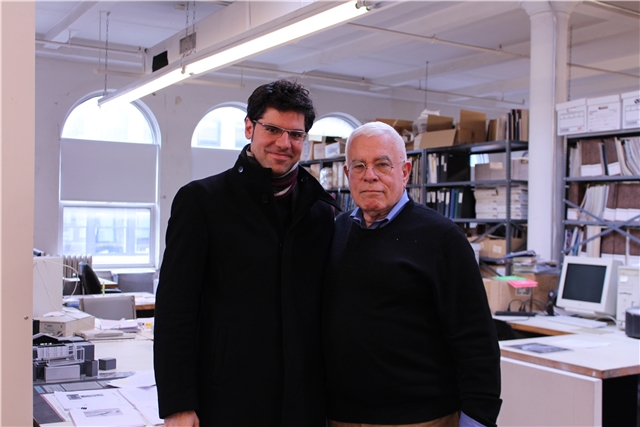ON FORM IN ARCHITECTURE– June 13th, 2013
- Looking back on the beginning of your career, why do you think your very first concern was the question of “form”?
- Could one say that extensive philosophical accounts of architectural form have been particularly rare in the history of our field? If so, what do you think the reasons for such a lack may be?
- What is the relationship between “form” and “formalism” in architecture? Is formalism in architecture a possibility?
- How is the difference between metaphysics of architecture vs. metaphysics of architectural form to be delineated?
- Would you still divide up the category “form” essentially the same way you did in your PhD thesis?:
A vitally important subdivision must be made of the general category ‘form,’ into two types: ‘generic’ and ‘specific.’ The term ‘generic form’ is here understood to mean form thought of in a Platonic sense, as a definable entity with its own inherent laws. The term ‘specific form,’ on the other hand, can be thought of as the actual physical configuration realized in response to a specific intent and function.
- Would you agree with the following distinction?:
- Shape alludes to “overall mass,” “volumetric outline,” or “envelope” qualities.
- Form, instead, refers to internal three-dimensional configuration.
If this distinction applies, then do you think that it would be possible to speculate that most of the “formal innovation” that has been claimed to drive architectural production over the past 20 years has happened at the level of “shape” in a way that it hasn’t at the level of “form”?
- Do you agree with the following statement, and if so, do you think it is relevant?:
If architectural form is ultimately but a set of relations in space, then the problem becomes how to characterize those relations specifically so that what gets defined is architectural form and not merely geometry.
- Concept of topology => Two geometric objects (each a set of points in Euclidean three-dimensional space) are topologically equivalent if, and only if, there is a biunique, bicontinuous transformation carrying one into the other. If we replace “geometric objects” with “architectural form,” then it would be possible to hold that two architectural forms can only be different, at some fundamental level, if they are not topologically equivalent, i.e. if their inherent laws relative to the way they structure space are not traceable to the same origin.
In your view, could this be a productive approach to grapple with the nature of architectural form? Furthermore, do you think it would help account for an expanding field of possible formal arrangements that exceeds the group of platonic solids—all of these solids being collapsed into one single type due to their being topologically equivalent?
- What is the relationship between the concepts of “index” and “pattern” as they may be brought to bear on the problem of formal thinking?
- The editors of thresholds 33, Formalisms (2007), where your “Lateness: a Critique of the Metaphysics of Presence” came out, structured that issue around the claim that
there is as of yet no significant critical theory that guides the current production and critique of architectural form.
Do you agree with such a diagnosis? If so, how would you assess the need to construct such a theory?
- In a recent interview you claimed:
My work argues that the part is not metonymic of the whole and vice versa. […] In each of the buildings there are several different structures at several different scales. There is a grid of round columns, one of square columns, and one of rectangular columns. Anything that would suggest homogeneity and a part-to-whole relationship is broken down—the faceting, the different grids, the layering of surfaces. All contribute to what might be called a disaggregation.
How could one define part-to-whole relationships of a metonymic kind versus other kinds of such part-to-whole relationships (vis-à-vis architectural form)? Would you say that in your work different conditions of relationality coexist that cannot be synthesized into a single system?
- Questioning the metaphysics of presence. In the same interview you stated the following:
Now, he [Jacques Derrida] may be right that architecture cannot overcome the metaphysical condition of presence, but it is certainly worth questioning such an assumption.
How do you think this assumption can be effectively questioned through architectural form? Do conditions of fragmentation and incompleteness point in the direction of a metaphysics of absence, whereas other tropes such as system or synthesis would tend to reaffirm presence? If so, could you elaborate on the conceptual grounds of these two statements?







